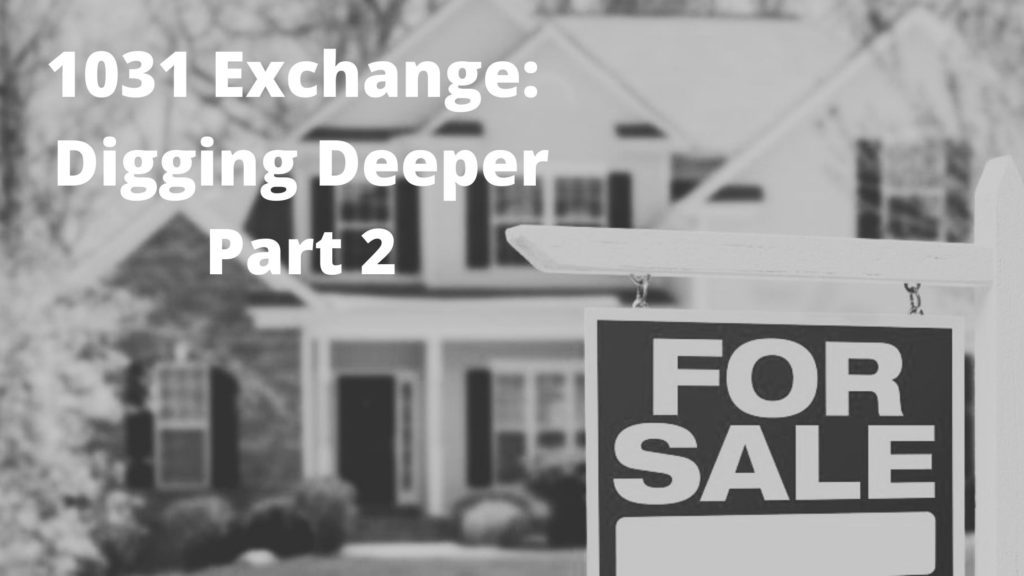Welcome to part two of the deep dive into what a 1031 exchange is. Last time we talked about the rules that you need to follow when using a 1031 exchange. This time we are going to delve into depreciation and the rules and information pertaining to fees that can and cannot be covered and a few other things to consider when it comes to a 1031 exchange.
So, what exactly is depreciation? This is the percentage of the cost of an investment property that is written off every year, recognizing the effects of wear and tear. When a property is sold, capital gains taxes are calculated based on the property’s net-adjusted basis, which reflects the property’s original purchase price, plus capital improvements minus depreciation. If you sell a property for more then the depreciated value that was calculated when you first bought the property, the depreciation amount will be included in your taxable income from the sale of the property.
Now why is depreciation important you ask? Well, the size of the depreciation recapture increases over time, so when you enter into a 1031 exchange you are able to avoid a large increase in taxable income that depreciation recapture would cause later on. This is important to know because it is needed when calculating the value of any 1031 exchange transaction.
Remember when we talked about boots in part one? Well, the fees have a lot to do with that too. The fees that can be paid for with the funds from the exchange include: broker’s commission, qualified intermediary fees, filing fees, related attorney’s fees, title insurance premiums, related tax adviser fees, finder fees, and escrow fees. But when there are acceptations there also exclusions, the following cannot be paid with the exchange funds: financing fees, property taxes, repair or maintenance costs, and insurance premiums.
If you are part of an LLC you should know that you can only do an exchange on a property as an entity, but there is a loophole—you can do a drop and swap if some partners want to make an exchange and others do not. When you are in an LLC, you do not own a property, you own interest in a property, which is the taxpayer for the property. It does get more difficult with this though. 1031 exchanges are typically only done by a single taxpayer, not an LLC, so when certain members want to do this then they need to take special steps when not everyone agrees to this. It gets complex, especially since every property owner’s situation is unique to them, the basics are always universal.
So, what are the special steps? The partner that wants to make the 1031 exchange will transfer their portion of the interest in the property to the other members of the LLC for a deed to an equal percentage of the property. When the property that the LLC owns is sold, the LLC partners receive their pay directly, while the partner that sold their interest in the property to the LLC shares go to a qualified intermediary. When the majority of partners want to engage in a 1031 exchange, while those that do not want to participate can receive a certain percentage of the property at the time of the transaction and pay taxes on the proceeds while the proceeds of the others go to a qualified intermediary. These procedures are called “drop and swap.” It is the most common procedure in these situations.
When doing a drop and swap, you want to start the process of dropping the partner at least a year before the swap of the asset. If it isn’t done around that time frame, then the IRS may view the criteria for the drop and swap as not being met. This process can actually be done backwards as “swap and drop”, where the exchange takes place first and then after a reasonable and certain amount of time the partners who do not want to be part of it can exit.
A big benefit of doing a 1031 exchange is that the tax deferment can be taken with you to the grave, so if you have someone who is set to inherit the property that was acquired through a 1031 exchange the value is “stepped up” to a fair market, and it clears out the tax deferment debt. If you intend to leave the property to someone in case of death you should get an estate planner involved so that you can get the max opportunities when it occurs.




